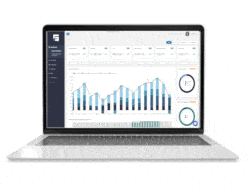Autumn seems to always be quickly approaching—are you ready for it? Prepping your commercial real estate properties for autumn involves protecting your buildings from these seasonal changes. Here are a few ways to prepare your properties before temperatures drop.
Top 10 tips
Think about what needs to be done before you spend money and time on it. Addressing the most critical issues first reduces the risk of damage to the building and alleviates safety concerns for tenants and visitors. You can stay in line with safety and building rules and avoid fines by getting seasonal assessments. Over time, you can raise the value of your property and make your tenants happier.
1. Insulate the Building
An insulation inspection is one of the most important things you can do to prepare your commercial real estate properties for autumn. Temperatures often drop dramatically overnight, which can strain a building’s heating system if hot air consistently leaks outside.
You should ensure windows, doors, and attic storage spaces have adequate insulation — it’s an essential part of Autumn property management. Caulk, spray foam, and fiberglass are generally very affordable, so this should be a straightforward process.
2. Turn off Faucets and Drains
Turning off external water lines is crucial, as your faucet fittings can break if there is any remaining liquid inside them. Getting as much out as possible is best to prevent it from cracking your landscaping equipment.
Manually draining the water lines is a simple process that can protect you from unexpected maintenance in the near future. Shut off access to the exterior faucets, then open them to allow the remaining liquid to drain out. Once you’re done, store the hoses and install a faucet cover.
3. Inspect the Roof
While a roof inspection is a regular part of commercial real estate management, the best time to conduct it is before the leaves begin to fall. Generally, experts recommend inspecting roofs before the temperature drops to prepare for potential severe weather. If they catch anything, it’s much easier to fix it before they have to work around ice and extreme temperatures.
4. Get Property Management Software
You get new financial and tenant responsibilities when seasons change, so it’s wise to consider getting commercial real estate management software. It can streamline requests, interactions, and administrative duties so you can focus on the bigger picture.
Additionally, it often comes with tools to enhance your efficiency. For example, STRATAFOLIO offers operations management services to automate building maintenance and work orders. With advanced software, you can better maintain your property in the demanding cooler months.
5. Trim Trees and Shrubs
Autumn is the ideal time to maintain the greenery of real estate properties. Trees and shrubs often lose limbs or fall over in this season because cooler temperatures make them more susceptible to breaking. Pruning them while it’s still relatively warm out means less property damage and fewer landscaping costs.
Since commercial real estate management often involves outsourcing work to third-party vendors, you may have a relationship with a lawn-care company. If there’s nothing in your contract about winterizing your landscaping, consider requesting the service.
6. Replace Detector Batteries
Typically, buildings have more carbon monoxide in autumn because tenants use space heaters or alternative heating methods to warm themselves. Despite this particular gas being toxic to humans, it’s odorless, tasteless, and invisible — poisoning barely even has symptoms.
To protect your tenants from carbon monoxide, change the batteries in your property’s detector. Ensure each device is working and test them before you finish. This responsibility is one of the most critical parts of autumn property management.
You should also consider replacing your current system with a more modern one. Traditional carbon monoxide detectors only alert people who can hear the alarm, while a smart version can remotely send updates to your phone. You’ll have a better time managing them with that level of connectivity.
7. Clean and Cover Gutters
If your commercial property has gutters, clean them out before leaves start to fall. You should also install meshes or guards to keep debris from clogging anything. This simple fix can ensure you have fewer tedious maintenance requests.
8. Store Seasonal Furniture
Autumn brings leaves, rain and mud — things you want to keep away from outdoor furniture. If you provide it, move everything to a covered location or transport it to a storage space to protect it.
9. Clean up the Lawn
Direct your maintenance team to handle lawn care before fall arrives. Preparing for cooler temperatures while it’s still relatively warm can help your grass stay healthy. In fact, autumn aeration is best for cool-season grasses — kinds that thrive in colder areas — because they experience the best growth when they have time to adjust.
10. Stock up on Supplies
You’ll need supplies to carry out the proper autumn property management. Stock up on ice melt, rakes and garbage bags. You’ll have to clear a lot of leaves and possibly deal with rain freezing overnight, so you should get equipment to deal with it.
Consider using an environmentally friendly ice melt instead of stocking up on traditional ones. Since the standard salt damages root systems when it washes underground, you unintentionally disfigure or stunt your property’s greenery. You won’t even find out until spring arrives, turning it into a significant surprise expense.
11. Inspect the HVAC
A quality HVAC system is essential during the colder months, so it’s a good idea to give it regular maintenance to prepare for autumn. This will give your crew time to fix any unknown issues before the temperatures go down, resulting in a lighter workload for you. Additionally, it can enhance your tenant’s perception of the property. An HVAC cleaning enhances energy efficiency, which is essential when heating a commercial building in autumn.
12. Animal-Proof the Outside
Animals often find their way inside during autumn because they’re looking for a warmer home. In preparation for this, you must animal-proof the outside of your property. Ensure there are no gaps or holes they can climb through. If your building has a deck, install a lattice or mesh to keep animals from hiding underneath.
13. Install Anti-Slip Mats
Although tenants typically install anti-slip mats, consider placing them yourself to ensure they are used. In autumn, people visiting or working at your property will start to track in ice melt, mud, and water from outside. To protect your floors, install a special entryway cover to catch most debris.
14. Waterproof the Outside
Your building will experience wetness — and possibly freezing temperatures — as the cooler months approach. Check your property’s foundation for leaks and holes where liquid may seep in. If you find any, patch them with caulk or have them professionally repaired.
Get Started on Autumn Property Management
Commercial real estate management responsibilities for autumn generally involve dealing with wet, cold weather. As long as you plan and prepare your property, it should withstand severe storms and cold temperatures well.








